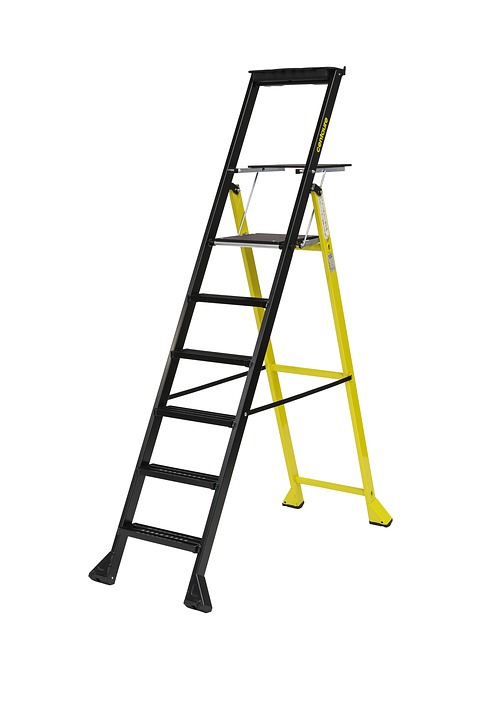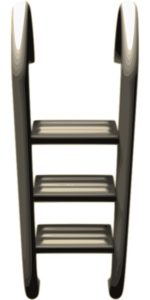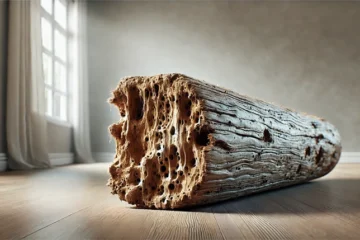Ladders, Scaffolding, and Extension Handles

A typical indoor room is anywhere from 8–12′ high or more. To reach ceilings, the upper portions of walls, and overhead objects, you’ll inevitably need some help in the form of ladders, scaffolding, or extension handles.
Ladders
Ladders are the most commonly used tool for reaching high places when painting. They’re available in a range of sizes, models, and materials. The most popular types of ladders include:
- 6′ wooden stepladder

Though stepladders come in heights ranging from about 3–16′, the 6′ wooden stepladder has long been a popular choice for interior paint jobs. This ladder is helpful in reaching heights up to approximately 10′. It’s easy to fold and carry and can support more than 200 pounds. Wooden ladders are also the least expensive option. - 6′ fiberglass stepladder

Many of the features available in wooden stepladders are also available in fiberglass models—including their inexpensive price and the fact that they don’t conduct electricity, which makes them safe to use near outlets and exposed wires. And because they’re lightweight, fiberglass ladders are easy to transport from one room to another. - 2′ aluminum stepladder

Strong, lightweight, and resistant to corrosion, the 2′ aluminum stepladder is especially helpful when preparing to paint. It comes in handy for a variety of paint-related chores, such as removing window treatments and upper-cabinet hardware. It’s easy to carry around, too—you can often move it simply by lifting it with your foot. - Adjustable ladder

One of the most popular choices for interior painting, this versatile device can be used in many different configurations. Such flexibility is especially useful when you’re working on staircases. Typically available in fiberglass or aluminum, adjustable ladders can convert into stepladders, stairway stepladders, straight ladders, and scaffolding system supports.
Ladder Safety
When using a ladder, remember to follow safety precautions. Always make sure the ladder is in the locked position before attempting to climb or stand on it, and never stand above the second rung from the top of a stepladder or the fourth rung from the top of an extension ladder. When buying a ladder, check for a label that indicates it meets certain safety standards, particularly those established by the Occupational Health and Safety Act (OSHA) or the American National Standards Institute (ANSI).
Scaffolding
If you have two stepladders, you can use them to support a scaffolding extension plank, a horizontal platform that’s typically made of either metal, fiberglass, or wood. Support one end of the plank on each ladder and stand on the platform as you work. Always make sure the scaffolding is stable before you attempt to stand on it.
Telescoping Extension Poles
Screwed into a standard paint roller, a telescoping extension pole lets you paint ceilings while keeping your feet planted firmly on the floor. Often made of aluminum, these handles telescope, or adjust their length, to suit the height they’re required to reach. They come in many sizes but can often be extended up to 12′.


